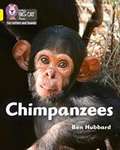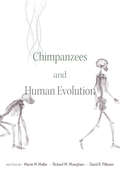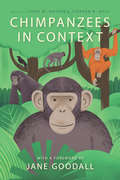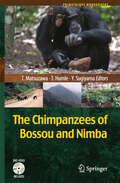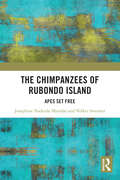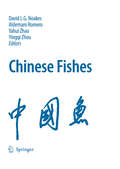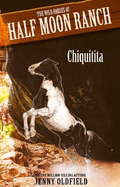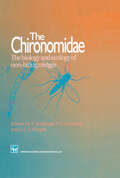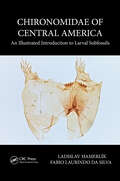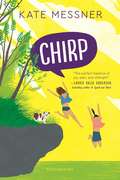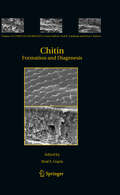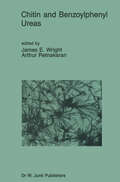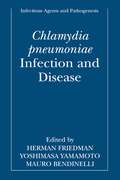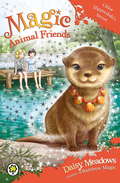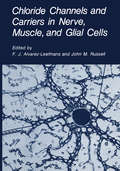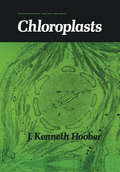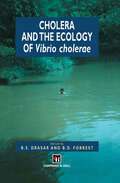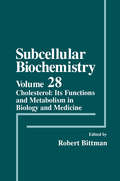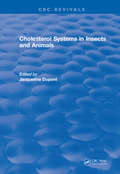- Table View
- List View
Chimpanzee (UEB Contracted)
This is an image of a chimpanzee shown from the side with its head in the top left corner of the page and body in the centre. There is a locator dot shown, which will be at the top left of the page when the image is the right way up.The chimpanzee is facing you so both ears, eyes, small nostrils and mouth can be found. It has a pale hairless face. On the right of the page is the chimpanzee's hairy body. The chimpanzee walks on its forearms and legs. Its forearms to the left of the image rest on the knuckles of its curled hands and to the right are its legs with large feet and toes at the bottom of the page.
Chimpanzee (UEB Uncontracted)
This is an image of a chimpanzee shown from the side with its head in the top left corner of the page and body in the centre. There is a locator dot shown, which will be at the top left of the page when the image is the right way up.The chimpanzee is facing you so both ears, eyes, small nostrils and mouth can be found. It has a pale hairless face. On the right of the page is the chimpanzee's hairy body. The chimpanzee walks on its forearms and legs. Its forearms to the left of the image rest on the knuckles of its curled hands and to the right are its legs with large feet and toes at the bottom of the page.
Chimpanzees: Band 3 Yellow (PDF) (Collins Big Cat Phonics For Letters And Sounds Ser.)
by Ben HubbardCollins Big Cat Phonics for Letters and Sounds features exciting fiction and non-fiction decodable readers to enthuse and inspire children. They are fully aligned to Letters and Sounds Phases 1-6 and contain notes in the back. The Handbooks provide support in demonstration and modelling, monitoring comprehension and expanding vocabulary. Learn all about chimpanzees, from where they live to what they eat, in this photographic non-fiction book. Yellow/Band 3 books offer varied sentence structure and natural language This book focuses on adjacent consonants with short vowel phonemes. Pages 14 and 15 allow children to re-visit the content of the book, supporting comprehension skills, vocabulary development and recall. Reading notes within the book provide practical support for reading Big Cat Phonics for Letters and Sounds with children, including a list of all the sounds and words that the book will cover.
Chimpanzees and Human Evolution
by Martin N. MullerKnowledge of wild chimpanzees has expanded dramatically. This volume, edited by Martin Muller, Richard Wrangham, and David Pilbeam, brings together scientists who are leading a revolution to discover and explain human uniqueness, by studying our closest living relatives. Their conclusions may transform our understanding of human evolution.
Chimpanzees and Human Evolution
by Martin N. MullerKnowledge of wild chimpanzees has expanded dramatically. This volume, edited by Martin Muller, Richard Wrangham, and David Pilbeam, brings together scientists who are leading a revolution to discover and explain human uniqueness, by studying our closest living relatives. Their conclusions may transform our understanding of human evolution.
Chimpanzees in Context: A Comparative Perspective on Chimpanzee Behavior, Cognition, Conservation, and Welfare
by Lydia M. Hopper Stephen R. RossThe study of the chimpanzee, one of the human species’ closest relatives, has led scientists to exciting discoveries about evolution, behavior, and cognition over the past half century. In this book, rising and veteran scholars take a fascinating comparative approach to the culture, behavior, and cognition of both wild and captive chimpanzees. By seeking new perspectives in how the chimpanzee compares to other species, the scientists featured offer a richer understanding of the ways in which chimpanzees’ unique experiences shape their behavior. They also demonstrate how different methodologies provide different insights, how various cultural experiences influence our perspectives of chimpanzees, and how different ecologies in which chimpanzees live affect how they express themselves. After a foreword by Jane Goodall, the book features sections that examine chimpanzee life histories and developmental milestones, behavior, methods of study, animal communication, cooperation, communication, and tool use. The book ends with chapters that consider how we can apply contemporary knowledge of chimpanzees to enhance their care and conservation. Collectively, these chapters remind us of the importance of considering the social, ecological, and cognitive context of chimpanzee behavior, and how these contexts shape our comprehension of chimpanzees. Only by leveraging these powerful perspectives do we stand a chance at improving how we understand, care for, and protect this species.
Chimpanzees in Context: A Comparative Perspective on Chimpanzee Behavior, Cognition, Conservation, and Welfare
The study of the chimpanzee, one of the human species’ closest relatives, has led scientists to exciting discoveries about evolution, behavior, and cognition over the past half century. In this book, rising and veteran scholars take a fascinating comparative approach to the culture, behavior, and cognition of both wild and captive chimpanzees. By seeking new perspectives in how the chimpanzee compares to other species, the scientists featured offer a richer understanding of the ways in which chimpanzees’ unique experiences shape their behavior. They also demonstrate how different methodologies provide different insights, how various cultural experiences influence our perspectives of chimpanzees, and how different ecologies in which chimpanzees live affect how they express themselves. After a foreword by Jane Goodall, the book features sections that examine chimpanzee life histories and developmental milestones, behavior, methods of study, animal communication, cooperation, communication, and tool use. The book ends with chapters that consider how we can apply contemporary knowledge of chimpanzees to enhance their care and conservation. Collectively, these chapters remind us of the importance of considering the social, ecological, and cognitive context of chimpanzee behavior, and how these contexts shape our comprehension of chimpanzees. Only by leveraging these powerful perspectives do we stand a chance at improving how we understand, care for, and protect this species.
The Chimpanzees of Bossou and Nimba
by Tetsuro Matsuzawa, Tatyana Humle and Yukimaru SugiyamaThe chimpanzees of Bossou in Guinea, West Africa, form a unique community which displays an exceptional array of tool use behaviors and behavioral adaptations to coexistence with humans. This community of Pan troglodytes verus has contributed more than three decades of data to the field of cultural primatology, especially chimpanzees’ flexible use of stones to crack open nuts and of perishable tools during foraging activities. The book highlights the special contribution of the long-term research at Bossou and more recent studies in surrounding areas, particularly in the Nimba Mountains and the forest of Diécké, to our understanding of wild chimpanzees’ tool use, cognitive development, lithic technology and culture. This compilation of research principally strives to uncover the complexity of the mind and behavioral flexibility of our closest living relatives. This work also reveals the necessity for ongoing efforts to conserve chimpanzees in the region. Chimpanzees have shed more light on our evolutionary origins than any other extant species in the world, yet their numbers in the wild are rapidly declining. In that sense, the Bossou chimpanzees and their neighbors clearly embody an invaluable cultural heritage for humanity as a whole.Readers can enjoy video clips illustrating unique behaviors of Bossou chimpanzees, in an exclusive DVD accompanying the hardcover or at a dedicated website described in the softcover.
The Chimpanzees of Rubondo Island: Apes Set Free
by Josephine Nadezda Msindai Volker SommerHow did a random batch of chimpanzees come to populate a small island in Tanzania where apes had never lived before? Combining information gathered from fieldwork, laboratory and archival research, this book tells the unique story of chimpanzee babies taken from their forest homes in West-Central Africa and sold to European zoos and circuses, to then be shipped to Lake Victoria and set free on Rubondo Island. These founder animals learnt what to eat, how to build nests, to breed and raise young – ultimately forming a chimpanzee-typical fission–fusion society that today is thriving. The authors compare the ecology, behaviour and genetics of the Rubondo population with communities of wild chimpanzees, providing exciting insights into how our closest relatives adjust to changing environments. At the same time, a reconstruction of the historical context of the Rubondo experiment reflects on its chequered colonial heritage, and the introduction is viewed against current threats to the survival of apes in their natural habitats. The book will be of interest to scholars and professionals working in primatology, animal behaviour, conservation biology and postcolonial studies.
The Chimpanzees of Rubondo Island: Apes Set Free
by Josephine Nadezda Msindai Volker SommerHow did a random batch of chimpanzees come to populate a small island in Tanzania where apes had never lived before? Combining information gathered from fieldwork, laboratory and archival research, this book tells the unique story of chimpanzee babies taken from their forest homes in West-Central Africa and sold to European zoos and circuses, to then be shipped to Lake Victoria and set free on Rubondo Island. These founder animals learnt what to eat, how to build nests, to breed and raise young – ultimately forming a chimpanzee-typical fission–fusion society that today is thriving. The authors compare the ecology, behaviour and genetics of the Rubondo population with communities of wild chimpanzees, providing exciting insights into how our closest relatives adjust to changing environments. At the same time, a reconstruction of the historical context of the Rubondo experiment reflects on its chequered colonial heritage, and the introduction is viewed against current threats to the survival of apes in their natural habitats. The book will be of interest to scholars and professionals working in primatology, animal behaviour, conservation biology and postcolonial studies.
Chinese Fishes (Developments in Environmental Biology of Fishes #28)
by Yahui Zhao Yingqi Zhou David L. G. Noakes Aldemaro RomeroThis book documents the current state of research by Chinese scientists on fish biology and fisheries and brings together manuscripts by authors from research institutions, universities and government agencies. There are papers on aquaculture, life history, genetics, marine and freshwater biology, conservation, physiology, new species descriptions, and truly amazing hypogean fishes. The information on these remarkable cave species shows how much we have yet to learn from that incredible fauna. There are papers dealing with some of the largest fishes and some of the smallest cave species. There are papers dealing with some of the most traditional forms of aquaculture and others with the most modern molecular techniques. The volume includes papers on critically threatened native fishes as well as the most common food species, such as grass carp (Ctenopharyngodon idella). The information on rare and threatened species shows how China is dealing with their endangered fishes. The information on their carp species will be invaluable to those in other countries who will either take advantage of the productive carp species in aquaculture or try to manage them as invasive species outside China. For the first time we bring together a complete overview of the state of fisheries research in China.
Chiquitita: Book 3 (Wild Horses)
by Jenny OldfieldChiquitita is a young mare taken from the wild herd to be tamed and worked without force. The method demands amazing patience and gentleness from Kirstie and Lisa's host, Wayne Raburn. But Wayne's ranch hand, Walter, secretly uses harsher methods which soon ruins his boss's good work. Kirstie exposes Walter, who loses his job. But now he wants revenge - and he's planning to take it out on the horse...
The Chironomidae: Biology and ecology of non-biting midges
by P. D. Armitage L. C. Pinder P. S. CranstonThe dipteran family Chironomidae is the most widely distributed and frequently the most abundant group of insects in freshwater, with rep resentatives in both terrestrial and marine environments. A very wide range of gradients of temperature, pH, oxygen concentration, salinity, current velocity, depth, productivity, altitude and latitude have been exploited, by at least some chironomid species, and in grossly polluted environments chironomids may be the only insects present. The ability to exist in such a wide range of conditions has been achieved largely by behavioural and physiological adaptations with relatively slight morphological changes. It has been estimated that the number of species world-wide may be as high as 15000. This high species diversity has been attributed to the antiquity of the family, relatively low vagility leading to isolation, and evolutionary plasticity. In many aquatic ecosystems the number of chironomid species present may account for at least 50% of the total macroinvertebrate species recorded. This species richness, wide distribution and tolerance to adverse conditions has meant that the group is frequently recorded in ecological studies but taxonomic difficulties have in the past prevented non-specialist identification beyond family or subfamily level. Recent works, including genetic studies, have meant that the family is receiving much more attention globally.
Chironomidae of Central America: An Illustrated Introduction To Larval Subfossils
by Ladislav Hamerlik Fabio Laurindo da SilvaThis illustrated introduction to Central American Chironomidae offers extensive photographic material, as well as detailed morphological and ecological descriptions of chironomid subfossils found in Central American lake sediments. The book uniquely provides two identification keys: one for living larvae occurring (or potentially being present) in Central America and one for the recorded subfossil remains, using limited morphological characters. Paleolimnological investigations using chironomid remains have undergone a resurgence of interest, and this taxonomic guide will aid the thorough analysis of the diversity and distribution of the taxa encountered to date in Central America. Out of the total 64 described genera, the book brings 20 endemic genera, and more than half of the presented morphotypes are new. Plates are included for each taxon with generic characters and also provide a key to morphotypes, if present, their specific characters, distribution, and ecology. Authored by a (paleo)limnologist and a taxonomist, the guide draws on a thorough taxonomical knowledge of the region’s recent chironomid fauna. It uses a paleolimnological approach to transmit this information to morphotypes that can be linked with ecology and used to reconstruct the past development of nature. The book thus helps paleo-workers and taxonomists to learn more about these fascinating insects and, through them, to discover the world around us. Providing a comprehensive reference for aquatic ecologists, paleolimnologists, students, and researchers, the guide will also be of interest to non-academic professionals working on applied research and biomonitoring of lakes. It will be useful for people studying both recent and subfossil material, not only in Central America, but in the whole Neotropical region.
Chironomidae of Central America: An Illustrated Introduction To Larval Subfossils
by Ladislav Hamerlik Fabio Laurindo da SilvaThis illustrated introduction to Central American Chironomidae offers extensive photographic material, as well as detailed morphological and ecological descriptions of chironomid subfossils found in Central American lake sediments. The book uniquely provides two identification keys: one for living larvae occurring (or potentially being present) in Central America and one for the recorded subfossil remains, using limited morphological characters. Paleolimnological investigations using chironomid remains have undergone a resurgence of interest, and this taxonomic guide will aid the thorough analysis of the diversity and distribution of the taxa encountered to date in Central America. Out of the total 64 described genera, the book brings 20 endemic genera, and more than half of the presented morphotypes are new. Plates are included for each taxon with generic characters and also provide a key to morphotypes, if present, their specific characters, distribution, and ecology. Authored by a (paleo)limnologist and a taxonomist, the guide draws on a thorough taxonomical knowledge of the region’s recent chironomid fauna. It uses a paleolimnological approach to transmit this information to morphotypes that can be linked with ecology and used to reconstruct the past development of nature. The book thus helps paleo-workers and taxonomists to learn more about these fascinating insects and, through them, to discover the world around us. Providing a comprehensive reference for aquatic ecologists, paleolimnologists, students, and researchers, the guide will also be of interest to non-academic professionals working on applied research and biomonitoring of lakes. It will be useful for people studying both recent and subfossil material, not only in Central America, but in the whole Neotropical region.
Chirp
by Kate Messner"[A] deftly layered mystery about family, friendship, and the struggle to speak up." - Laurie Halse Anderson, bestselling author of Speak and ShoutFrom acclaimed author Kate Messner comes the powerful story of a young girl with the courage to make her voice heard, set against the backdrop of a summertime mystery.When Mia moves to Vermont the summer after seventh grade, she's recovering from the broken arm she got falling off a balance beam. And packed away in the moving boxes under her clothes and gymnastics trophies is a secret she'd rather forget. Mia's change in scenery brings day camp, new friends, and time with her beloved grandmother. But Gram is convinced someone is trying to destroy her cricket farm. Is it sabotage or is Gram's thinking impaired from the stroke she suffered months ago? Mia and her friends set out to investigate, but can they uncover the truth in time to save Gram's farm? And will that discovery empower Mia to confront the secret she's been hiding--and find the courage she never knew she had? In a compelling story rich with friendship, science, and summer fun, a girl finds her voice while navigating the joys and challenges of growing up.
Chitin: Formation and Diagenesis (Topics in Geobiology #34)
by Neal S. S. GuptaThere are several books on properties of chitin and associated biomolecules and their biochemical significance. However, the present volume deals with a wide variety of biogeochemical and organic geochemical aspects of this vital macromolecule written by leading authors and experts in the field. Each chapter is carefully peer reviewed and is an updated account of recent research in isotopic, nanostructural, biochemical, microstructural, geochemical, paleontological and experimental aspects of chitin formation, distribution and preservation in the environment and earth history.
Chitin and Benzoylphenyl Ureas (Series Entomologica #38)
by James E. Wright Arthur RetnakaranThe opportunity to explore a developing new technology in a single biological system, chitin, from the molecular basis and with the inter relationship of the utilization of benzoylphenyl ureas in effective pest agroecosystem management strategies, represents a new evolution for integration of knowledge in this highly complex area. The degree of great progress and interest in the understanding of the interaction of chitin uItrastructures, biochemistry, and the unique ben zoylphenyl ureas attest to the timeliness of this effort. The purpose of the book that follows is to provide up-to-date and well illustrated details of current research knowledge including the latest of research results. The combination of the basic to the applied aspects rarely occurs specifically at the levels presented by the international contributors within. The original contributions composed the symposium "Chitin and Ben zoylphenyl Urea" organized by the co-editors at the International Con gress of Entomology in Hamberg, Germany, August 1984. We extend our appreciation to everyone who made the conference an outstanding success and highlight of the Congress, as well as making this book possible. We thank the authors, especially for their excellent international presenta tions, discussions, and preparation of the manuscripts. The knowledge evolved from many areas in chitin research, as well as the intricate com plexity of successful utilization of specific knowledge involving benzoylp henyl ureas in system management strategies for insects will continue to be in the forefront throughout the world's agroecosystems; and hopefully this book will enhance further research and development.
Chlamydia pneumoniae: Infection and Disease (Infectious Agents and Pathogenesis)
by Herman Friedman Yoshimasa Yamamoto Mauro BendinelliChlamydia pneumoniae is a bacteria that is most commonly known for causing colds and pneumonia. However, researchers have recently found a link between C. pneumoniae and atherosclerosis, a clogging of the arteries that causes heart attack and stroke. In addition, ongoing research is showing that certain strains may play a role in asthma, multiple sclerosis, Alzheimer's disease, and arthritis. This volume, part of the Infectious Agents and Pathogenesis series, is a complete portrait of C. pneumoniae and what is currently known about it.
Chloe Slipperslide's Secret: Book 11 (Magic Animal Friends #11)
by Daisy MeadowsWelcome to a magical world where animals talk and play - just like you and me!Mean witch Grizelda has used her horrid magic on poor Chloe Slipperslide. Now the little otter can't help being naughty - and starts hiding all the shiny things in Friendship Forest!Can Lily and Jess find all Chloe's favourite things and break the spell?
Chloride Channels and Carriers in Nerve, Muscle, and Glial Cells
by F. J. Alvarez-Leefmans John M. RussellThis is a book about how Cl- crosses the cell membranes of nerve, muscle, and glial cells. Not so very many years ago, a pamphlet rather than book might have resulted from such an endeavor! One might ask why Cl-, the most abundant biological anion, attracted so little attention from investigators. The main reason was that the prevailing paradigm for cellular ion homeostasis in the 1950s and 1960s assigned Cl- a ther modynamically passive and unspecialized role. This view was particularly prominent among muscle and neuroscience investigators. In searching for reasons for such a negative (no pun intended) viewpoint, it seems to us that it stemmed from two key experimental observations. First, work on frog skeletal muscle showed that Cl- was passively distributed between the cytoplasm and the extracellular fluid. Second, work on Cl- transport in red blood cells confirmed that the Cl- transmembrane distribution was thermodynamically passive and, in addition, showed that Cl- crossed the mem brane extremely rapidly. This latter finding [for a long time interpreted as being the result of a high passive chloride electrical permeability(? CI)] made it quite likely that Cl- would remain at thermodynamic equilibrium. These two observations were gener alized and virtually all cells were thought to have a very high P Cl and a ther modynamically passive Cl- transmembrane distribution. These concepts can still be found in some physiology and neuroscience textbooks.
Chloroplasts (Cellular Organelles)
by J.K. HooberThis monograph is intended to provide an overview of the structure, function, and development of the chloroplast. It should be viewed as a beginning of the study of chloroplasts and not as an end. In keeping with an introductory approach, abbreviations generally have not been used, so that substance is not replaced by symbol. The principal aim has been to provide a teaching tool to introduce students to the major characteristics of the chloroplast, with as much emphasis on mech anisms as possible at this level. It was written for students with an advanced college level education in biology and chemistry who also have some knowl edge of biochemistry. The fundamentals of these subj ects cannot be included in a book of this type. However, to provide a meaningful description of how the chloroplast works, Le. , what the mechanisms of photosynthetic reactions are, the subj ect must be dealt with at the molecular level. Living systems are chemical systems, and the importance of understanding these systems at the molecular level cannot be overstated. Therefore, although attempts were made to keep the chemistry at a relatively simple level, occasionally statements are made that can be understood only with a sufficient background knowledge of chemistry. It is important for students to realize in broad outline form the functions of the chloroplast and where its functions fit into the scheme of life.
Cholera and the Ecology of Vibrio cholerae
by B. S. Drasar and B. D. ForrestOnly in recent years has it been revealed that V. cholerae is a normal inhabitant of esturine and riverine waters. This means that even if the disease can be eliminated from human population by vaccines etc. the vibrio will continue to survive independently in the environment. It is likely that the environment is the source of epidemic strains. This is the first book to focus on the implication of these discoveries.
Cholesterol: Its Functions and Metabolism in Biology and Medicine (Subcellular Biochemistry #28)
by Robert BittmanExperts investigate the biochemical and biomedical aspects of cholesterol, addressing its metabolism in normal and disease states. They discuss a broad range of topics, including key steps in the cholesterol biosynthetic pathway, and the role of cholesterol in cancer, atherosclerosis, and diseases of the nervous system. The book's comprehensive coverage also includes the pathological consequences and potential therapies for various disease states, and the development of new anti-atherogenic drugs.
Cholesterol Systems in Insects and Animals
by Jacqueline DupontThe reviews in this collection are unique in their intent to provide a basis for understanding of the subject. They include historical, descriptive, and comparative information which is not always presented in �state of the science� reviews. Cholesterol is viewed in each chapter as part of a system � structural, kinetic, or metabolic. The complex nature of the place of cholesterol in living systems is illustrated in each chapter.

